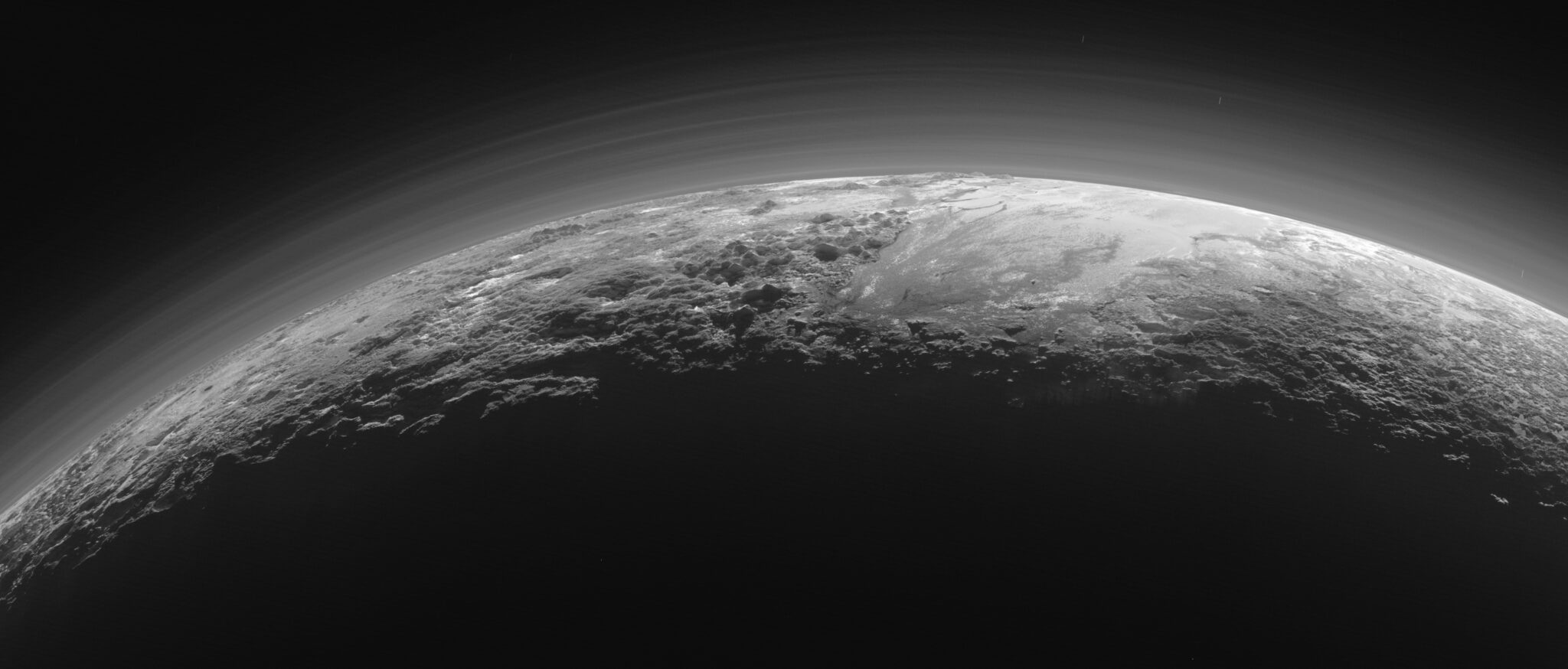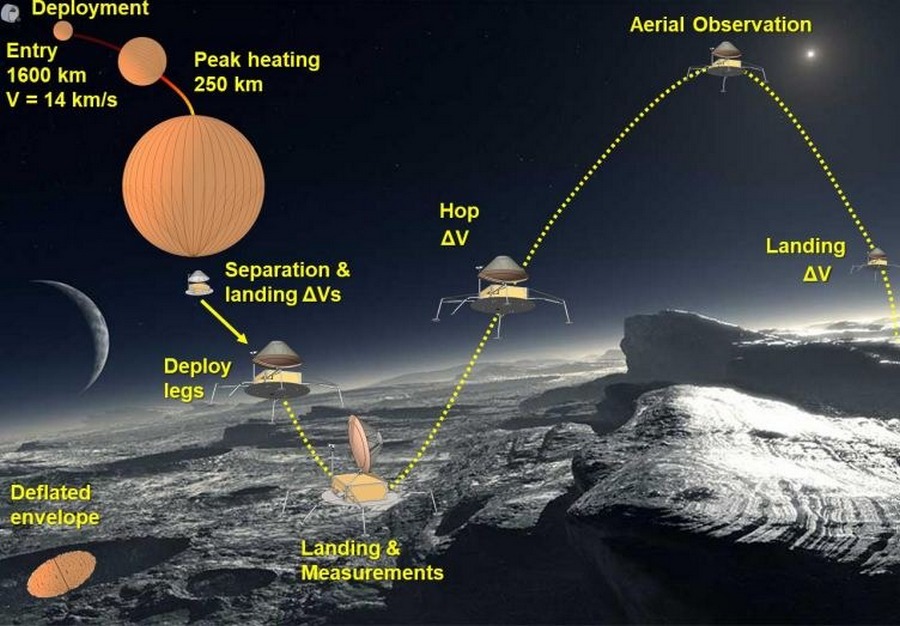NASA’s Innovative Advanced Concepts (NIAC) program has proposed a very ambitious idea of landing a spacecraft on the surface of Pluto, which to some people may even seem crazy.

Landing on Pluto is an extremely challenging task. Two major questions arise in the development of the mission: how will the probe slow down as it approaches the dwarf planet, and what kind of vehicle will be used to descend to its surface? The answer to the first question is aerobraking. Pluto has an extremely rarefied atmosphere, as confirmed by the New Horizons mission in 2015. However, its density is quite sufficient for effective braking of spacecraft.

After air braking and reducing its speed from 14 km/s to a few tens of meters per second, the orbiter will drop the descent module, which should touch down on Pluto’s surface. And here NIAC offers an answer to the second question – a hopper. Engineers increasingly propose the use of jumping models of landing vehicles because they are better suited to conditions of thin atmospheres and space objects with weak gravity than helicopters or rovers on wheels.

The hopping probe will be able to travel across the surface in protracted jumps, performing scientific investigations at various sites on Pluto, including geomorphologic studies and chemical analysis in place. The NIAC report describes the mission’s five primary science objectives, which include studying surficial geomorphology and conducting chemical analysis.
The mission launch date was originally scheduled for 2029. However, this timeline seems too optimistic for now. The mission will require gravity support from Jupiter, and the next potential launch window could open in 2042. This means that the spacecraft will reach Pluto in the 2050s. Such a late launch is probably the only possible launch for this mission, so we will have to wait almost 30 years to see if it succeeds.
Sometimes crazy ideas require patience, and only time will tell if the team has the mission to realize this ambitious dream.
Previously, we told you 12 interesting facts about Pluto.
According to universetoday.com


